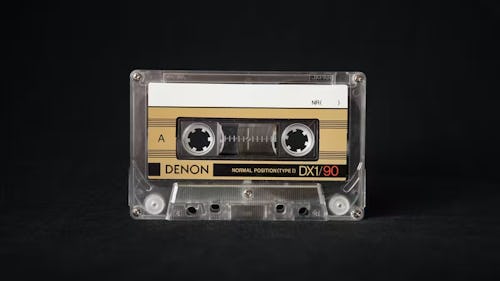Some of the crazy ways technology has evolved in the last few decades

Do you remember when Amazon sold books or when you had to disconnect from MSN so your mum could use the phone? Or perhaps, you have no idea what LimeWire is or what pressing play and record on a tape player while listening to the radio does.
Either way, it is time for a walk down memory lane to remember how things used to be in terms of entertainment, surfing the web, and online shopping. Prepare to either feel old or not know what we are talking about!
When making mixtapes was manual work
If you want to feel old, then thinking back to when you would make mixtapes on a cassette or CD will undoubtedly do it. Many of us don’t consider our technological age and automatically think we are with the times. However, specific things can trigger nostalgia and remind us that while we might be young at heart, we are stuck in the past, technologically speaking.
In 2022, through apps like Spotify, Apple Music, and YouTube, we can have an almost never-ending catalog of songs at our disposal. We have voice-activated speakers, can coordinate playlists from our watches, and enjoy videos on our mobiles, tablets, TVs, and computers.
Everything is on-demand when we want it, and we can pause, play, stop, and repeat it whenever we choose. But it wasn’t always like this. In the 80s and 90s, a common way to make playlists was to sit by the radio with a cassette recorder and wait for your favorite song to come on.
As soon as it started playing, you would press Rec and Play simultaneously to record to cassette. The trick was to get to the song's end and stop the recording before the DJ started talking again. You would then carefully write out every artist's name and track name in the fold-out sleeve of the cassette, so you knew when to fast forward or rewind to a particular track.
Disconnected connectivity
Connectivity is something we take for granted today. Our mobiles are constantly online, as are our watches, home assistants, computers, and TVs.
As much as a third of us admit to being online almost all the time. But in the not-so-distant past, getting connected used to be a lot more complicated. Internet was only available via a dial-up modem that used a landline which was also used to make and receive phone calls. The technology at the time did not allow the internet to be connected and the landline to be used for calls at the same time.
This led to many inter-family disputes about having to come offline (or log out of chat rooms) so a parent or sibling could use the phone.
This was particularly frustrating if you were downloading a pirated track from your favorite artist or trying to woo a love interest via MSN Messenger. Thankfully, we can multitask without fear of connectivity issues, and landlines are becoming increasingly obsolete.
The origins of today’s entertainment giants
Today, Netflix is one of the most subscribed entertainment networks globally. With more than 214 account holders in 190 countries, streaming almost 4000 different shows, it is hard to imagine what life was like before. But did you know that Netflix was once a DVD rental service?
Many moons ago, before streaming was a thing, Netflix used to rent DVDs to members and send them via post. Once you were done, you simply sent them back and ordered your next batch. It was a hit, but by 2011, the DVD arm of the business was put on the backburner as the concept of streaming came to the fore.
Did you also know that Amazon started off life as an online bookseller? The site was founded back in 1994 as a competitor to US bookseller Barnes and Noble. But after a few years, it started to expand its offerings and offered new shipping models, including Super Savers Shipping.
By 2007, Kindle was released, harking back to its book-based roots, but in the meantime, it had also solidified its place as one of the largest online retailers in the world.
Looking back at how things have changed in just a couple of decades, makes us question how quickly things will change in the next 20 years.
We may look back on things like streaming and voice-activated entertainment with a nostalgic smile and note that it makes us feel even older. But with the metaverse set to become a reality, this could be happening sooner than we expect!